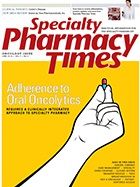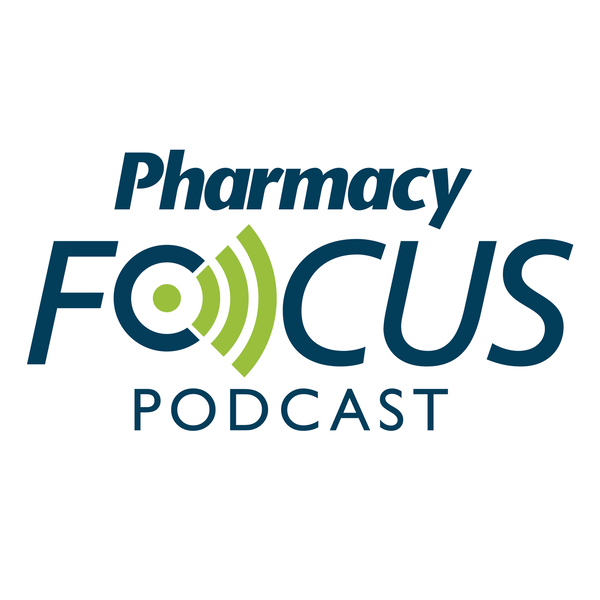Publication
Article
Specialty Pharmacy Times
Not Just a Generic: Specialty Pharmacy Considerations for a Biosimilar Launch
As new biosimilars enter the market, pharmacies should carefully consider infrastructure, resources, and strategies for successfully integrating the products into their portfolio of offerings.
WITH THE APPROVAL FOR THE LAUNCH OF INFLECTRA (reference drug Remicade) in April 2016 and Zarxio (reference drug Neupogen) in 2015, we find ourselves at the beginning of biosimilar proliferation for which specialty pharmacies (SPs) should be prepared. There are 5 more biosimilar applications currently pending with the FDA, 3 of which fall within the oncology market.
There are the Apotex and Sandoz biosimilars for the reference drug Neulasta, and the Apotex biosimilar for the reference drug Neupogen. As these new biosimilars enter the market, SPs should reflect on the industry response to Sandoz’s introduction of Omnitrope, a generic human growth hormone product, nearly 10 years ago for lessons learned.
As biosimilars enter the market, SPs, especially those that focus on oncology drugs, should carefully consider infrastructure, resources, and strategies for successfully integrating the products into their portfolio of offerings. Although many may see biosimilars as “generics for biologics,” a successful biosimilar launch will likely require a more considered approach than is required for generics.
Comparable to branded products, biosimilars may require SP staff to effectuate prescriber communications, robust sales staff activities, patient adherence services, and prior authorizations. Additionally, if a manufacturer approaches a biosimilar launch as a generic launch, the lack of manufacturer-supported services may further complicate market realization of the biosimilar’s potential. Payers have high hopes that biosimilars will cut into drug spend.
For example, in 2014, Express Scripts predicted that the approval of Zarxio and Inflectra could save more than $22 billion over a 10-year period.1 However, prescriber preferences for brand biologics may create a roadblock in shifting market share to biosimilars.
This is because a prescriber will have to affirmatively prescribe the biosimilar. There are 2 approval pathways: biosimilars and interchangeable biosimilars. While biosimilars have no clinically meaningful differences from the reference product, SPs will not be able to substitute a biosimilar in the way it may be permitted to substitute a generic for a branded drug.
The prescriber must write the prescription for the biosimilar instead of the reference product and only interchangeable biosimilars may be substituted like generics under state pharmacy law. Biosimilar success will depend on physicians choosing to prescribe the biosimilar instead of the brand.
Although payers may use formulary placement to drive prescriber choice to biosimilars, there are some hurdles to be crossed. For example, Medicare Part D plan sponsors and pharmacy and therapeutics committees must review newly approved biosimilars, biosimilar manufacturers are not required to subsidize Part D gap coverage for the products, and biosimilars are subject to Medicaid rebates.
Finally, if biosimilar manufacturers do not offer patient support programs equivalent to the branded product offerings, prescribers and patients may also push back on biosimilar use. Patients and prescribers often rely on brand manufacturers’ support programs, such as copay and charitable assistance and patient adherence support, to maintain medication adherence.
When attempting to balance the offerings of a biosimilar manufacturer and market expectations in a particular disease state, SPs preparing for a biosimilar launch should consider resource allocation for its core services. SPs may need to employ many of the same sales force and operational processes for biosimilars as they do for branded drugs.
Physicians may benefit from clinical information about the product as will patients. Therefore, the SP sales force should be educated on the biosimilar. Given that biosimilars are relatively new, physicians may also benefit from discussions with pharmacists about interchangeability and product selection.
Core services such as benefits investigation and prior authorizations work will likely need to be performed. Biosimilars may require specialized shipping, such as refrigeration. SPs that do not allocate appropriate resources to a biosimilar launch, thinking that the biologic will be received by the market like a generic, may find themselves without the proper infrastructure. SPs should also be careful to ensure parity in the treatment of their core and enhanced services for biosimilars and branded drugs.
Core services are those that SPs perform without any compensation from a third party, in contrast to enhanced services, which an SP only performs when receiving compensation. An enhanced service for a branded drug should also be an enhanced service for a biosimilar. Biosimilar manufacturers may not construct the same level of patient support programs for a biosimilar as do brand manufacturers, which may tempt SPs to offer such services for biosimilars without compensation.
However, an SP should not perform what would be enhanced services for a branded drug at no cost for the biosimilar. In other words, if an SP only performs a service when paid by a brand manufacturer, the SP should not perform that service in relation to a biosimilar unless it is also paid by the manufacturer. For example, many SPs perform prior authorizations without compensation from manufacturers, patients, or prescribers.
If an SP routinely performs prior authorizations at no charge for branded products, it should also do so for biosimilars—biosimilars and brand products should be treated equally. In contrast, SPs often only make scheduled, drug-specific, patient adherence calls when paid to do so by the manufacturer. In this instance, the SP should not make such calls to patients prescribed the biosimilar unless paid the fair market value of the service by the biosimilar manufacturer.
Even though patient adherence may fall short and the biosimilar may not be received as well by the market without the additional services, an SP could face regulatory scrutiny if it provides a different array of free services for biosimilar products than it does for branded drugs. To the extent manufacturers offer patient services, such as copay cards, reduced or free drug programs, patient adherence communications, or other similar types of programs, SPs should prepare to staff and execute on those services as if the biologic were a brand.
However, if the manufacturer does not offer such patient services, the SP may encounter lower numbers of successful fills due to patient inability to pay out-of-pocket costs or adherence issues. This lower fill and adherence rate may put additional demand on the SP’s staff performing core services (third party charitable assistance, communications with clinical staff about side effects, etc).
The 2007 Sandoz Omnitrope launch may provide an example of this phenomenon. The generic version of Pfizer’s human growth hormone product Genotropin (somatotropin) was treated by many in the industry as a typical generic launch.
However, the delivery mechanism for the generic was different than the brand. Similarly, biosimilars that are not launched with patient and prescriber support services on par with the brand may flounder in the market. SPs need to be alert and prepared as biosimilars enter the market. SPs that treat biosimilar products like generics may not be as successful.
Also, SPs must be mindful to treat biosimilars like branded drugs in its performance of core and enhanced services. Finally, SPs should not provide enhanced services for biosimilars at no charge. Ultimately, the biosimilar manufacturers will need to construct the appropriate support programs to ensure the success of the product. SPT

Newsletter
Stay informed on drug updates, treatment guidelines, and pharmacy practice trends—subscribe to Pharmacy Times for weekly clinical insights.






